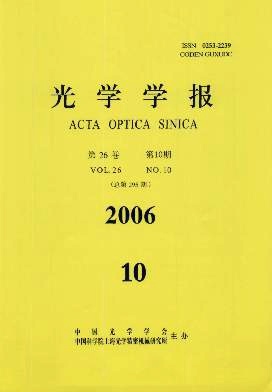Tm3+掺杂玻璃激光致冷新方案的理论分析
[1] . I. Epstein, M. I. Buchwald, B. C. Edwards et al.. Observation of laserinduced fluorescent cooling of a solid[J]. Nature, 1995, 377(6549): 500-503.
[2] . C. Edwards, M. I. Buchwald, R. I. Epstein. Development of the Los Alamos solidstate optical refrigerator[J]. Rev. Sci. Instruments, 1998, 69(5): 2050-2055.
[3] . Study on the fluorescent cooling by energy transfer within inhomogenous line shape in solids[J]. Acta Physcica Sinica, 1998, 47(8): 1397-1403.
[9] . E. Mungan, M. I. Buchwald, B. C. Edward et al.. Laser cooling of a solid by 16 K starting from room temperature[J]. Phys. Rev. Lett., 1997, 78(6): 1030-1033.
[10] . Luo, M. D. Eisaman, T. R. Gosnell. Laser cooling of a solid by 21 K starting from room temperature[J]. Opt. Lett., 1998, 23(8): 639-641.
[11] . R. Gosnell. Laser cooling of a solid by 65 K starting from room temperature[J]. Opt. Lett., 1999, 24(15): 1041-1043.
[12] . Rayner, N. R. Heckenberg, H. RubinszteinDunlop. Condensedphase optical refrigeration[J]. J. Opt. Soc. Am. B, 2003, 20(5): 1037-1053.
[13] Qin Weiping, Chen Baojiu, Zhang Yongxu et al.. Development of fluorescent cryocooler in future[J]. Chin. J. Luminescence, 2001, 22(1): 37~42 (in Chinese)
秦伟平,陈宝玖,张永旭 等. 荧光致冷器的未来发展[J]. 发光学报, 2001, 22(1): 37~42
[14] B. C. Edwards, M. I. Buchwald, R. I. Epstein. Optical refrigerator using reflectivity tuned dielectric mirrors[P]. U.S. patent ,2000, 6,041,610
[15] . Heeg, M. D. Stone, A. Khizhnyak et al.. Experimental demonstration of intracavity solidstate laser cooling of Yb3+∶ZrF4BaF2LaF3AlF3NaF glass[J]. Phys. Rev. A, 2004, 70(2): 021401.
[16] . W. Hoyt, M. P. Hasselbeck, M. SheikBahae et al.. Advances in laser cooling of thuliumdoped glass[J]. J. Opt. Soc. Am. B, 2003, 20(5): 1066-1074.
[17] C. W. Hoyt. Laser cooling in thuliumdoped solids[D]. New Mexico: University of New Mexico Albuquerque, 2003. 5, 65~80
[18] . Lamouche, P. Lavallard, R. Suris et al.. Low temperature laser cooling with a rareearth doped glass[J]. J. App. Phys., 1998, 84(1): 509-516.
[19] . W. Hoyt, M. SheikBahae, R. I. Epstein et al.. Observation of antiStokes fluorescence cooling in thuliumdoped glass[J]. Phys. Rev. Lett., 2000, 85(17): 3600-3603.
孙海生, 贾佑华, 印建平. Tm3+掺杂玻璃激光致冷新方案的理论分析[J]. 光学学报, 2006, 26(10): 1522. 孙海生, 贾佑华, 印建平. Theoretical Analysis on New Scheme to Cool Tm3+Doped Glass Sample[J]. Acta Optica Sinica, 2006, 26(10): 1522.





